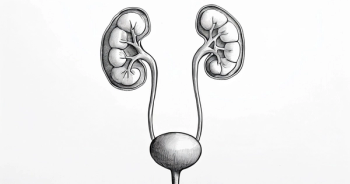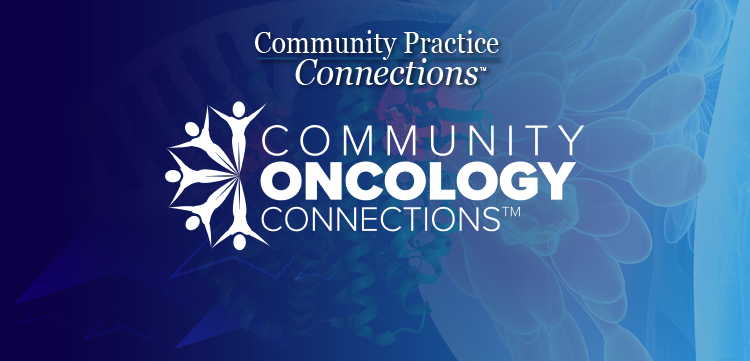
MARIPOSA Confirms OS Benefit for Amivantamab/Lazertinib in EGFR+ NSCLC
Final overall survival data from the MARIPOSA trial show that amivantamab and lazertinib improves survival vs osimertinib in EGFR-mutated NSCLC.
Amivantamab-vmjw data (Rybrevant) plus lazertinib (Lazcluze) significantly extended overall survival (OS) when compared with osimertinib (Tagrisso) when used as a first-line treatment for patients with locally advanced or metastatic non–small cell lung cancer (NSCLC) harboring epidermal growth factor receptor (EGFR) exon 19 deletions (ex19del) or L858R substitution mutations, according to findings from the phase 3 MARIPOSA study (NCT04487080).1
These findings, which were presented at the 2025 European Lung Cancer Congress (ELCC), also showed that at a median follow-up of 37.8 months, those given the chemotherapy-free regimen of first-line amivantamab plus lazertinib had a significantly longer median OS vs those given osimertinib (hazard ratio [HR], 0.75; 95% CI, 0.61-0.92; P <.005). The median OS for this combination has not yet been reached, and survival benefits continue to extend beyond the measured follow-up period (not reached [NR]; 95% CI, 42.9-NR). In the osimertinib group, the median OS was 36.7 months (95% CI, 33.4-41.0), which was consistent with prior studies evaluating osimertinib.
At 3.5 years, 56% of patients treated with the amivantamab/lazertinib combination were alive vs 44% of patients treated with osimertinib. Further, the median OS is projected to exceed 1 year beyond the median of 3 years seen with osimertinib, based on survival data.
This study is the first and only to demonstrate a statistically significant and clinically meaningful OS improvement over osimertinib.
“The MARIPOSA trial is demonstrating a novel survival benefit with amivantamab plus lazertinib that is a new standard of care for the first-line treatment of patients with EGFR-mutated non–small cell lung cancer,” Nicolas Girard, MD, PhD, a thoracic oncologist at the Institut Curie in Paris, France, told Targeted OncologyTM in an interview.
In addition to OS, the amivantamab/lazertinib combination also showed benefit for several of the study’s secondary end points when compared with osimertinib, including intracranial progression-free survival (PFS), intracranial duration of response (DOR), and intracranial overall response rate (ORR).
Amivantamab plus lazertinib prolonged time to symptomatic progression (TTSP) by more than 14 months vs osimertinib (43.6 months vs 29.3 months; HR, 0.69; 95% CI, 0.57-0.83; P <.001).
For safety, the profile of the amivantamab/lazertinib combination was consistent with the primary analysis. Observed adverse event (AE) rates were similar to that seen with other combinations that include amivantamab.
There were also no new safety signals seen with the additional longer-term follow-up and most of the AEs were reported early. Findings from this part of the study also suggest that implementing prophylactic measures during the first 4 months of amivantamab and lazertinib may significantly reduce the risk of skin reactions, infusion-related reactions, and venous thromboembolic events.
“Overall survival is a very important end point for us because it shows how PFS benefit may translate into prolonged survival for the patients. And actually, in the final overall survival analysis of MARIPOSA, we have a strong benefit with amivantamab plus lazertinib vs osimertinib,”
About the MARIPOSA Trial
The phase 3, randomized
In October 2023, the MARIPOSA trial met its primary end point, demonstrating a statistically significant and clinically meaningful improvement in PFS vs osimertinib in this patient population. The combination delivered a statistically significant improvement in PFS with a hazard ratio of 0.70 (95% CI, 0.58-0.85; P =.0002). The median PFS was 23.7 months (95% CI, 19.1-27.7) with the combination of amivantamab and lazertinib vs 16.6 months (95% CI, 14.8-18.5) with osimertinib.2
Based on these findings,
References:
RYBREVANT® (amivantamab-vmjw) plus LAZCLUZE™ (lazertinib) outperforms osimertinib with a significant and unprecedented overall survival benefit in patients with EGFR-mutated non-small cell lung cancer. News release. Johnson & Johnson. March 26, 2025. Accessed March 26, 2025.
https://tinyurl.com/3evwu3cf RYBREVANT® (amivantamab-vmjw) plus LAZCLUZE™ (lazertinib) approved in the U.S. as a first-line chemotherapy-free treatment for patients with EGFR-mutated advanced lung cancer. News release. Johnson & Johnson. August 20, 2024. Accessed March 26, 2025.
https://tinyurl.com/2h243n8 a FDA approves lazertinib with amivantamab-vmjw for non-small lung cancer. News release. FDA. August 19, 2024. Accessed March 26, 2024.
https://tinyurl.com/4nnytykz








































